Abstract
The density of Bifidobacterium spp., fecal coliforms, Escherichia coli, and total anaerobic bacteria, acridine orange direct counts, percentages of total bacterial community activity and respiration, and 12 physical and chemical parameters were measured simultaneously at six sites for 12 months in the Mameyes River rain forest watershed, Puerto Rico. The densities of all bacteria were higher than those reported for uncontaminated temperate rivers, even though other water quality parameters would indicate that all uncontaminated sites were oligotrophic. The highest densities for all indicator bacteria were at the site receiving sewage effluent; however, the highest elevation site in the watershed had the next highest densities. Correlations between bacterial densities, nitrates, temperature, phosphates, and total phosphorus indicated that all viable counts were related to nutrient levels, regardless of the site sampled. In situ diffusion chamber studies at two different sites indicated that E. coli could survive, remain physiologically active, and regrow at rates that were dependent on nutrient levels of the ambient waters. Bifidobacterium adolescentis did not survive at either site but did show different rates of decline and physiological activity at the two sites. Bifidobacteria show promise as a better indicator of recent fecal contamination in tropical freshwaters than E. coli or fecal coliforms; however, the YN-6 medium did not prove to be effective for enumeration of bifidobacteria. The coliform maximum contaminant levels for assessing water usability for drinking and recreation appear to be unworkable in tropical freshwaters.
Full text
PDF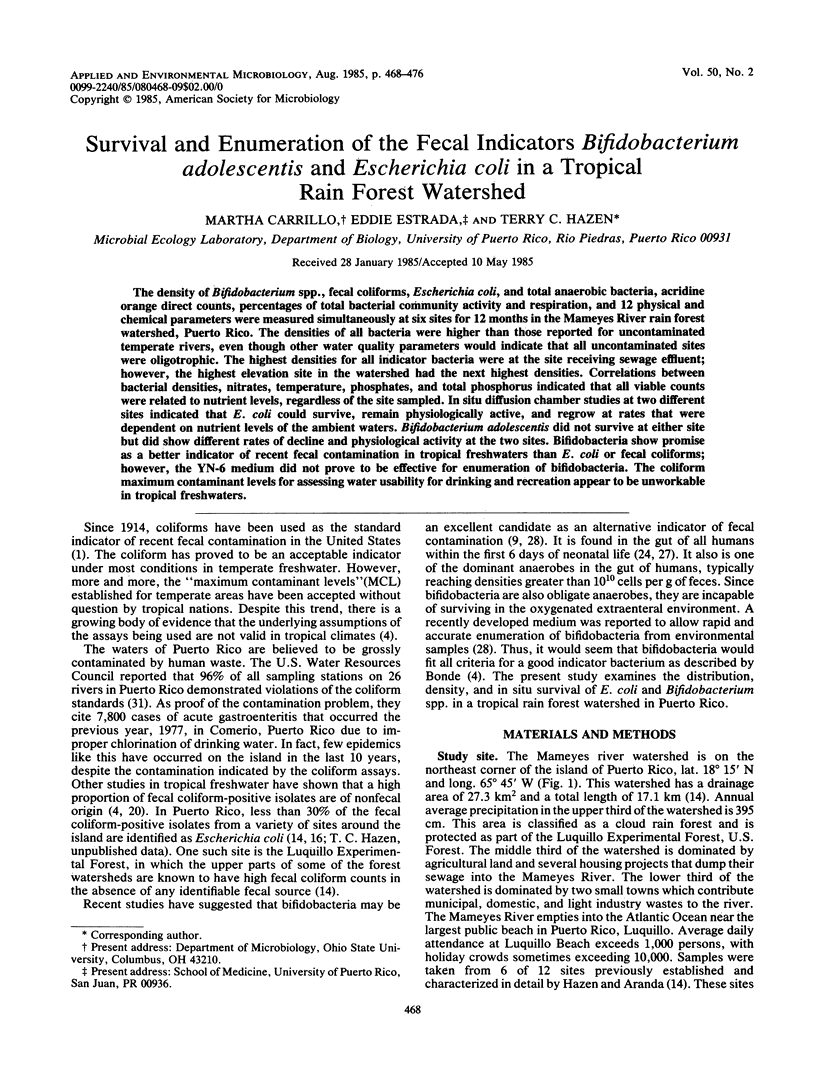
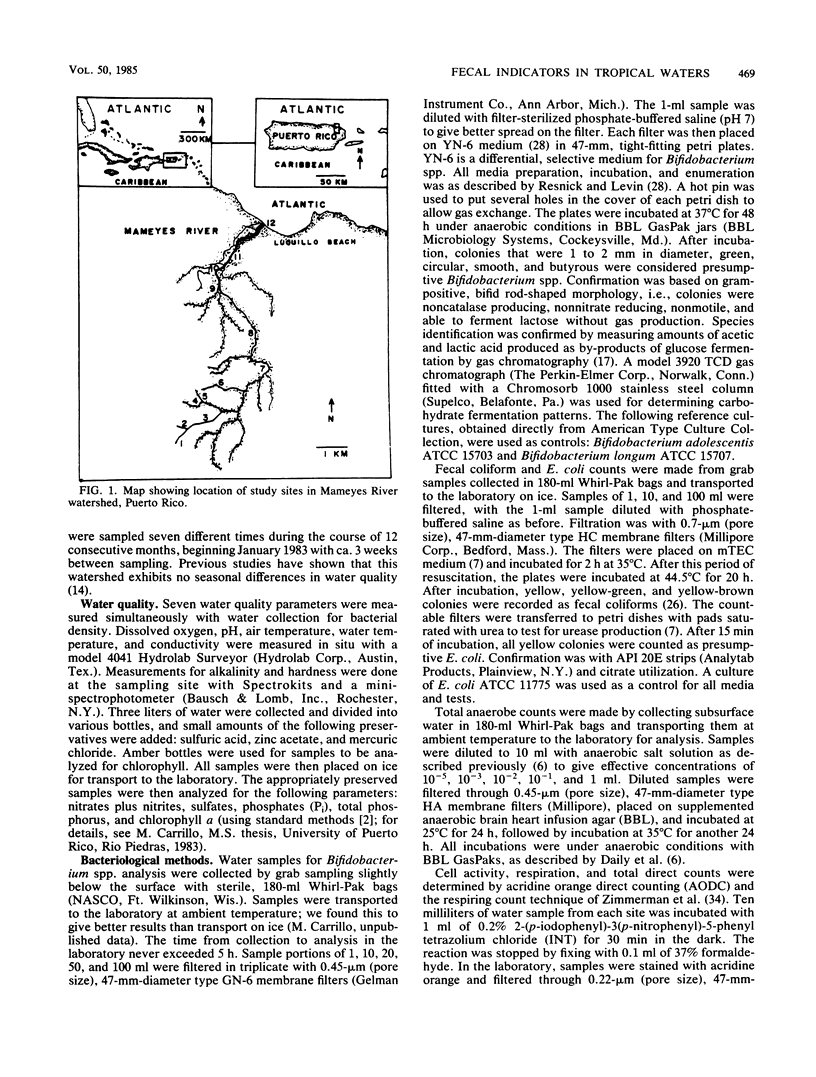
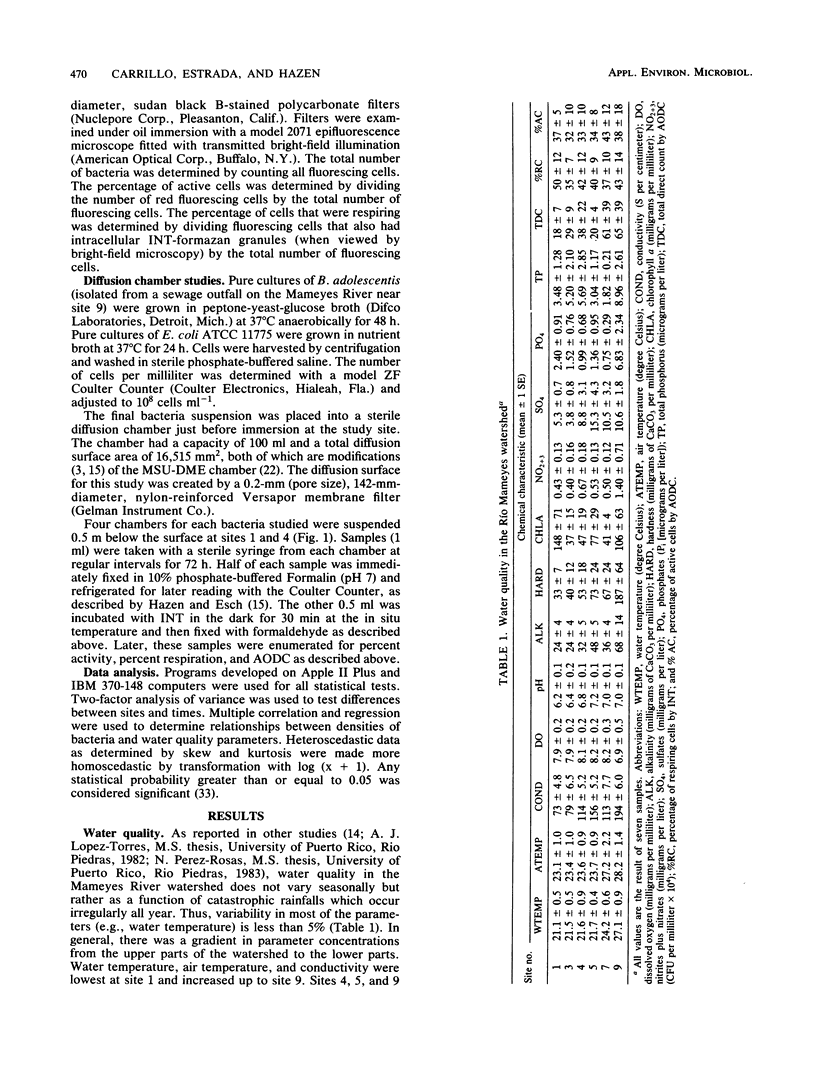
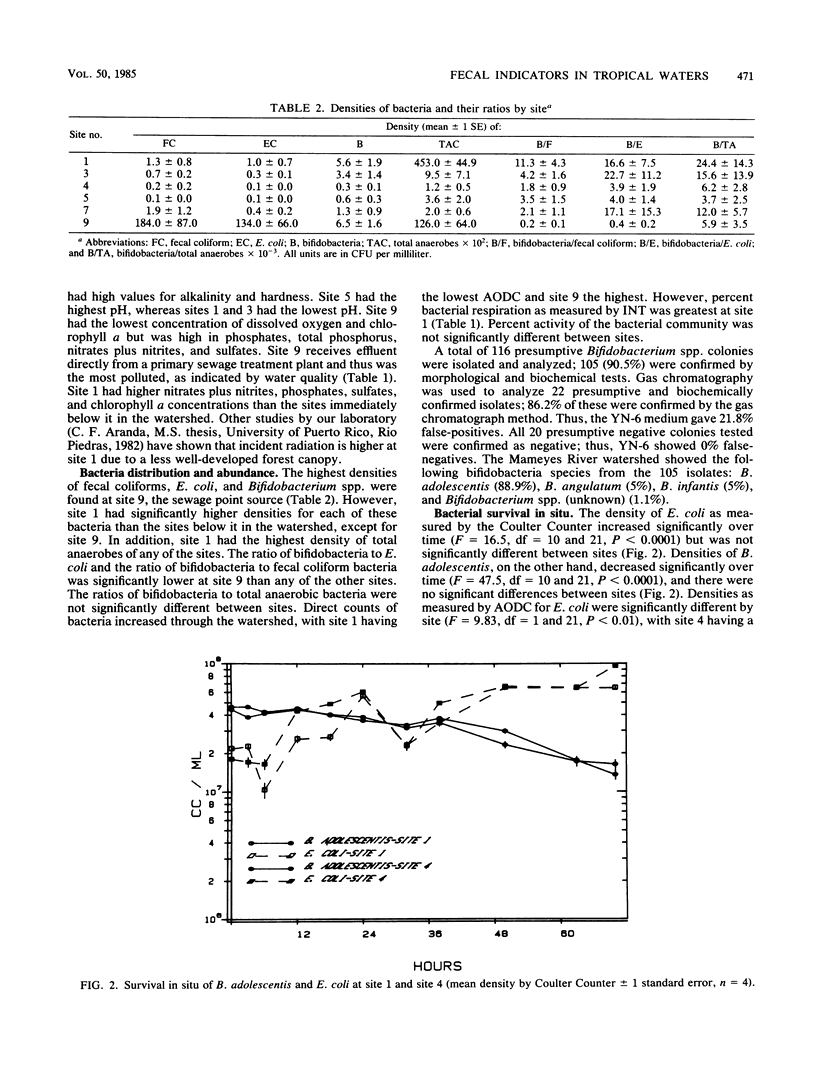
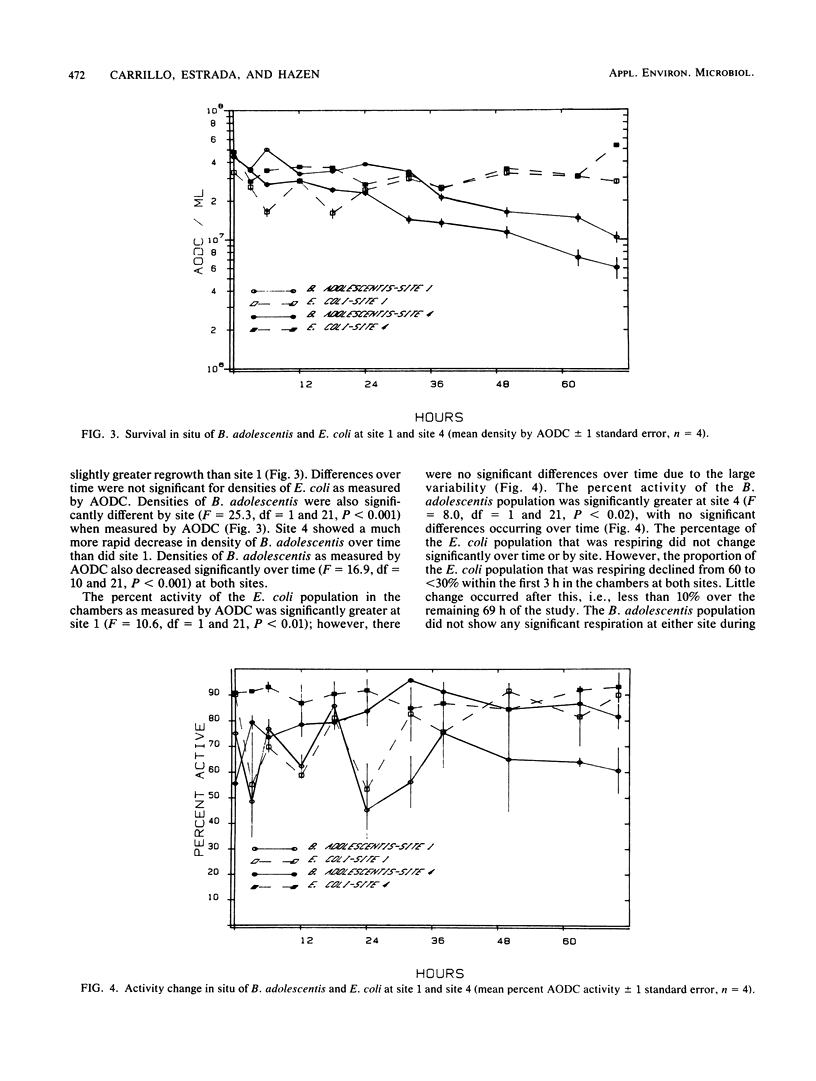
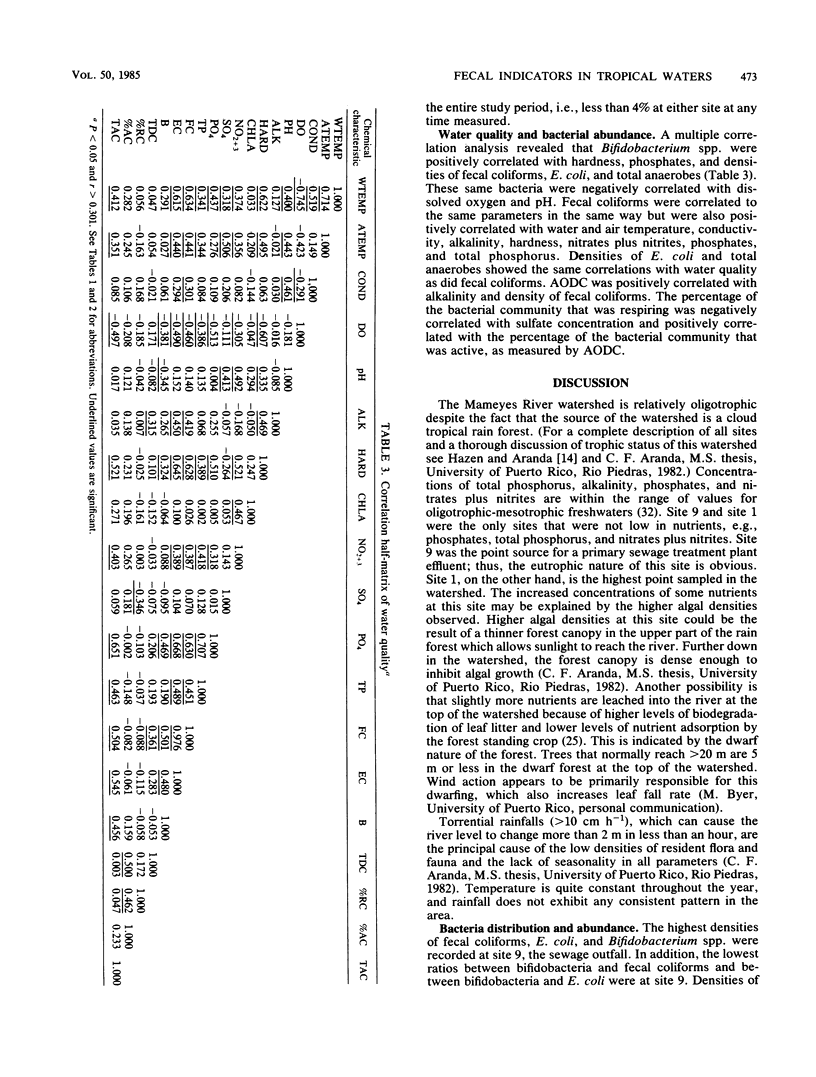

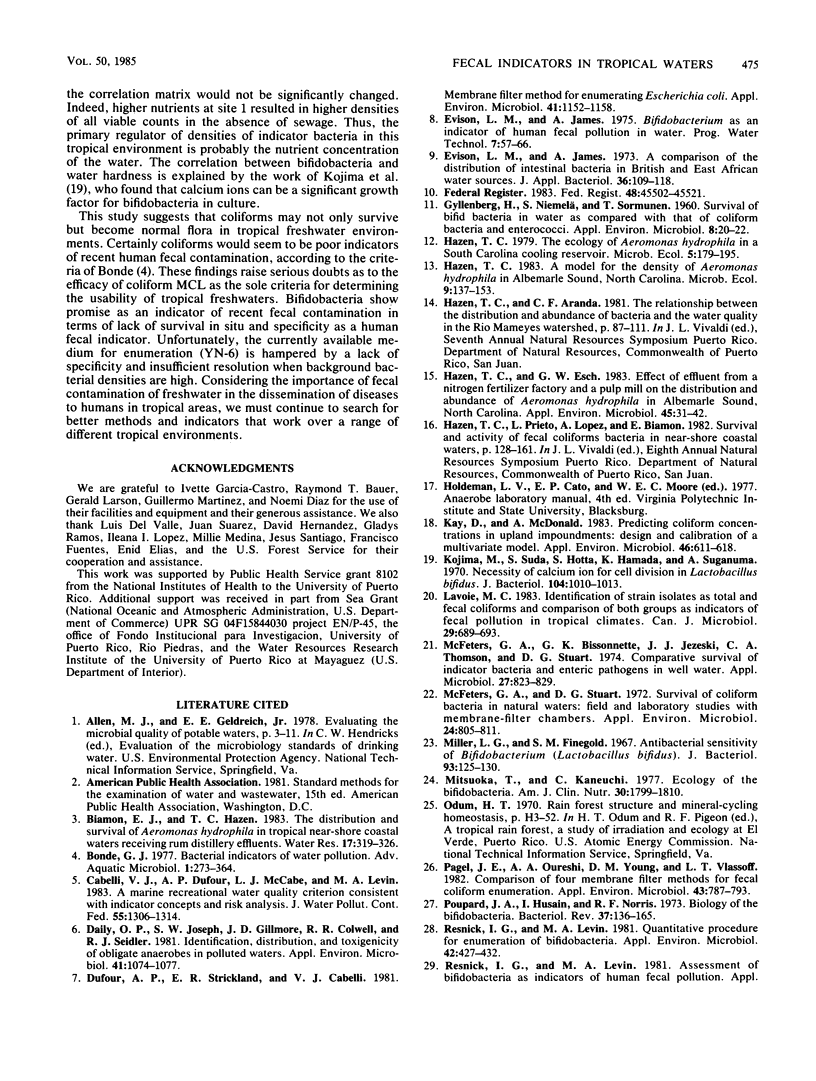
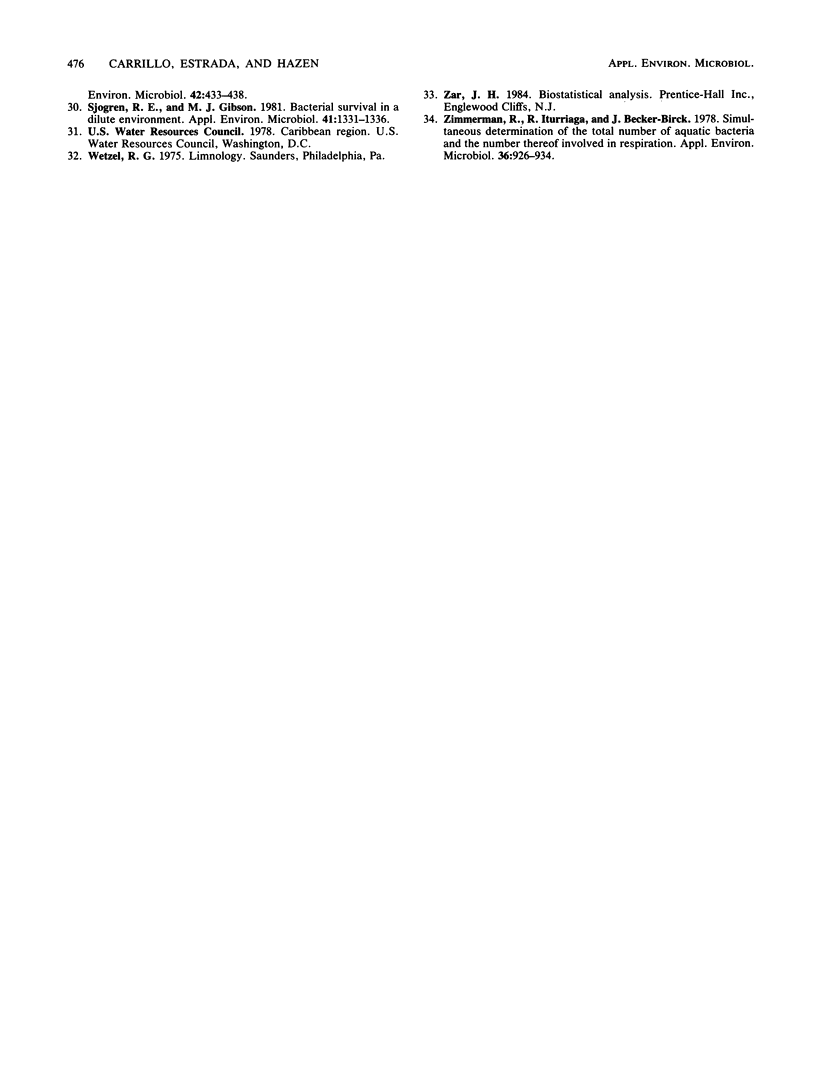
Selected References
These references are in PubMed. This may not be the complete list of references from this article.
- Daily O. P., Joseph S. W., Gillmore J. D., Colwell R. R., Seidler R. J. Identification, distribution, and toxigenicity of obligate anaerobes in polluted waters. Appl Environ Microbiol. 1981 Apr;41(4):1074–1077. doi: 10.1128/aem.41.4.1074-1077.1981. [DOI] [PMC free article] [PubMed] [Google Scholar]
- Dufour A. P., Strickland E. R., Cabelli V. J. Membrane filter method for enumerating Escherichia coli. Appl Environ Microbiol. 1981 May;41(5):1152–1158. doi: 10.1128/aem.41.5.1152-1158.1981. [DOI] [PMC free article] [PubMed] [Google Scholar]
- Evison L. M., James A. A comparison of the distribution of intestinal bacteria in British and East African water sources. J Appl Bacteriol. 1973 Mar;36(1):109–118. doi: 10.1111/j.1365-2672.1973.tb04078.x. [DOI] [PubMed] [Google Scholar]
- GYLLENBERG H., NIEMELA S., SORMUNEN T. Survival of bifid bacteria in water as compared with that of coliform bacteria and enterococci. Appl Microbiol. 1960 Jan;8:20–22. doi: 10.1128/am.8.1.20-22.1960. [DOI] [PMC free article] [PubMed] [Google Scholar]
- Hazen T. C., Esch G. W. Effect of effluent from a nitrogen fertilizer factory and a pulp mill on the distribution and abundance of Aeromonas hydrophila in Albemarle Sound, North Carolina. Appl Environ Microbiol. 1983 Jan;45(1):31–42. doi: 10.1128/aem.45.1.31-42.1983. [DOI] [PMC free article] [PubMed] [Google Scholar]
- Kay D., McDonald A. Predicting coliform concentrations in upland impoundments: design and calibration of a multivariate model. Appl Environ Microbiol. 1983 Sep;46(3):611–618. doi: 10.1128/aem.46.3.611-618.1983. [DOI] [PMC free article] [PubMed] [Google Scholar]
- Kojima M., Suda S., Hotta S., Hamada K., Suganuma A. Necessity of calcium ion for cell division in Lactobacillus bifidus. J Bacteriol. 1970 Nov;104(2):1010–1013. doi: 10.1128/jb.104.2.1010-1013.1970. [DOI] [PMC free article] [PubMed] [Google Scholar]
- Lavoie M. C. Identification of strains isolated as total and fecal coliforms and comparison of both groups as indicators of fecal pollution in tropical climates. Can J Microbiol. 1983 Jun;29(6):689–693. doi: 10.1139/m83-112. [DOI] [PubMed] [Google Scholar]
- McFeters G. A., Bissonnette G. K., Jezeski J. J., Thomson C. A., Stuart D. G. Comparative survival of indicator bacteria and enteric pathogens in well water. Appl Microbiol. 1974 May;27(5):823–829. doi: 10.1128/am.27.5.823-829.1974. [DOI] [PMC free article] [PubMed] [Google Scholar]
- McFeters G. A., Stuart D. G. Survival of coliform bacteria in natural waters: field and laboratory studies with membrane-filter chambers. Appl Microbiol. 1972 Nov;24(5):805–811. doi: 10.1128/am.24.5.805-811.1972. [DOI] [PMC free article] [PubMed] [Google Scholar]
- Miller L. G., Finegold S. M. Antibacterial sensitivity of Bifidobacterium (Lactobacillus bifidus). J Bacteriol. 1967 Jan;93(1):125–130. doi: 10.1128/jb.93.1.125-130.1967. [DOI] [PMC free article] [PubMed] [Google Scholar]
- Mitsuoka T., Kaneuchi C. Ecology of the bifidobacteria. Am J Clin Nutr. 1977 Nov;30(11):1799–1810. doi: 10.1093/ajcn/30.11.1799. [DOI] [PubMed] [Google Scholar]
- Pagel J. E., Qureshi A. A., Young D. M., Vlassoff L. T. Comparison of four membrane filter methods for fecal coliform enumeration. Appl Environ Microbiol. 1982 Apr;43(4):787–793. doi: 10.1128/aem.43.4.787-793.1982. [DOI] [PMC free article] [PubMed] [Google Scholar]
- Poupard J. A., Husain I., Norris R. F. Biology of the bifidobacteria. Bacteriol Rev. 1973 Jun;37(2):136–165. doi: 10.1128/br.37.2.136-165.1973. [DOI] [PMC free article] [PubMed] [Google Scholar]
- Resnick I. G., Levin M. A. Quantitative procedure for enumeration of bifidobacteria. Appl Environ Microbiol. 1981 Sep;42(3):427–432. doi: 10.1128/aem.42.3.427-432.1981. [DOI] [PMC free article] [PubMed] [Google Scholar]
- Sjogren R. E., Gibson M. J. Bacterial survival in a dilute environment. Appl Environ Microbiol. 1981 Jun;41(6):1331–1336. doi: 10.1128/aem.41.6.1331-1336.1981. [DOI] [PMC free article] [PubMed] [Google Scholar]
- Zimmermann R., Iturriaga R., Becker-Birck J. Simultaneous determination of the total number of aquatic bacteria and the number thereof involved in respiration. Appl Environ Microbiol. 1978 Dec;36(6):926–935. doi: 10.1128/aem.36.6.926-935.1978. [DOI] [PMC free article] [PubMed] [Google Scholar]


